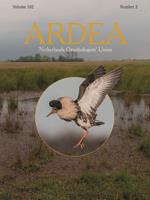To be able to set priorities in species conservation planning, we need to know how these species prioritize the environment themselves, i.e. what they consider to be better and worse sites. We present a unique and relevant case from tropical West-Africa based on 20 years of monthly counts of wetland sites spread along the 550 km long coast of Ghana. The Ghanaian Sanderling Calidris alba population increased almost fourfold from average monthly total counts of c. 1350 Sanderlings to 4850 during the study period. Interestingly, with this considerable increase, the sites with the larger numbers at the start of the survey showed the smallest relative increases during 20 years of monitoring. This pattern is consistent with a buffer effect and suggests that with an increasing overall population the best quality sites are filled up, so that additional birds will be forced to use lower quality sites. The preferred site in Ghana, a stretch of beach near the village of Esiama between the Amansuri-Ankobra estuaries, is now entirely unprotected. We argue that the site should be placed higher on the conservation agenda given the fact that up to 3.5% of the Sanderling population connecting Greenland with West- and southern Africa rely on this site.
How to translate text using browser tools
1 July 2014
Population Increases in Non-Breeding Sanderlings in Ghana Indicate Site Preference
Yaa Ntiamoa-Baidu,
Alfred A. Nuoh,
Jeroen Reneerkens,
Theunis Piersma

Ardea
Vol. 102 • No. 2
October 2014
Vol. 102 • No. 2
October 2014
buffer effect
coastal wetlands
density-dependence
flyway conservation
population regulation
waterbirds




